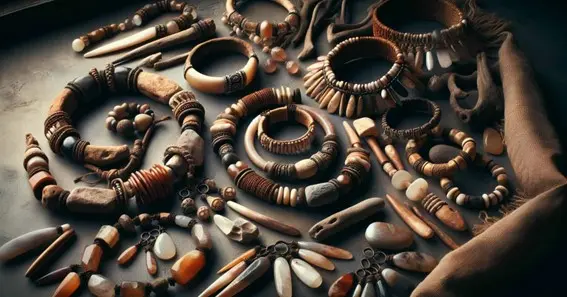Jewelry holds an enduring allure, transcending mere adornment to symbolize wealth, status, and sentiment. Whether inherited, gifted, or purchased, each piece carries its story and value. However, assessing the worth of an ornament extends far beyond its aesthetic appeal. This column explores important facts about getting an appraisal at a pawn shop for jewelry.
Understanding the Valuation:
At its core, jewelry valuation involves determining the market value of a piece based on various factors. These factors encompass not only the intrinsic qualities of the materials but also external market dynamics and subjective elements such as craftsmanship and historical significance.
Also Read N: The Power of ‘No Fees, No Commissions’: How It Puts More Cash in Your Pocket
Material Composition:
One of the primary determinants of jewelry value is its material composition. Precious metals, for instance, gold, silver, and platinum hold inherent value due to their rarity and desirability. Similarly, gemstones such as diamonds, rubies, and sapphires contribute significantly to a piece’s worth, with factors like carat weight, color, clarity, and cut influencing their value.
Also Read P: 12 Tips for a Minimalist Living Room
Market Trends:
Beyond the intrinsic value of materials, market trends play a crucial role in jewelry valuation. Fluctuations in supply and demand, changes in fashion trends, and economic factors can all impact the market value of the ornament. Staying abreast of such trends is essential for accurate valuation, as it provides insights into current market conditions and price fluctuations.
Craftsmanship and Design:
The craftsmanship and design of a piece also contribute to its value. Fine jewelry crafted by renowned artisans or bearing prestigious hallmarks commands higher prices due to the skill and expertise involved in its creation. Additionally, unique or vintage designs may hold sentimental or historical value, further enhancing their market worth.
Condition and Maintenance:
The condition of a piece significantly affects its appraisal value. Well-maintained jewelry with minimal wear and tear costs more than pieces showing visible damage or deterioration. Regular maintenance, including cleaning and repairs, can help preserve the condition and value of ornament over time.
Appraisal Process:
Obtaining an accurate appraisal for jewelry requires expertise and meticulous attention to detail. Professional appraisers assess various aspects of a piece, including its material composition, craftsmanship, market demand, and condition. They may also consider provenance and historical significance for rare or antique pieces.
Seeking Appraisal at a Pawn Shop:
Pawn shops offer a convenient option for obtaining appraisals and selling ornaments. While some may perceive pawn shops as venues solely for financial assistance, they also provide expert appraisal services by qualified professionals. Customers can benefit from the convenience and efficiency of getting an appraisal at a pawn shop for jewelry without needing appointments or extensive paperwork.
Choosing a Reputable Pawn Shop:
When seeking appraisal services at a pawn shop, choosing a reputable establishment with experienced staff and a transparent appraisal process is essential. Researching customer reviews, verifying credentials, and assessing the shop’s reputation within the community can help ensure a reliable and trustworthy appraisal experience.
Conclusion:
Ornament valuation is a multifaceted process that goes beyond surface-level aesthetics to consider factors influencing market worth. From material composition and market trends to craftsmanship and condition, numerous elements contribute to the appraisal value of jewelry. Seeking appraisal services at a reputable pawn shop provides a convenient and reliable option for assessing the worth of your ornaments and unlocking their actual value.






